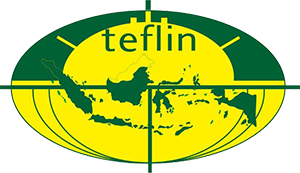Mediating Student Teachers through Edmodo in an Extensive Listening Class
Abstract
This study aims to explore the use of Edmodo as the media in extensive listening class for students teacher. This study was conducted in the class consisted of 46 students who took Extensive Listening course at the university. participants from this study were second semester students of English Education of IAIN Pekalongan. The participants used Edmodo for a full semester where the activities they did are, discussing about the subject material and sending assignments were given by the lecturer. The findings are the participants who used Edmodo actively and they utilized it maximally. The conclusion of this study is using Edmodo in the extensive listening class for student teachers of English Education of IAIN Pekalongan was effective.
Keywords
Full Text:
PDFReferences
Al-Kathiri. 2014. Beyond the Classroom Walls: Edmodo in Saudi Secondary School EFL Instruction, Attitudes and Challenges. King Saud:Curriculum and Instruction Department Giang. T.N. 2014. Edmodo – A new effective blended learning solution. Hanoi: Vietnam.
Ali, Fachri & Sofa, Eros Meilana. 2018. Students 'Perceptions of the Implementation of Blended Learning in A Large English Class. Edulitics, 3(1), 16-25.
Benny A. Pribadi. (2010). Model Desain Sistem Pembelajaran. Jakarta: Dian Rakyat.
Ermawati, Lina. 2016. The Use of Edmodo in Teaching Process of Writing Skills at the Eleventh Grade Students of Muhammadiyah High School 1 Klaten Academic Year 2016/2017. Thesis. IAIN Surakarta.
Evenddy, S. S & Hamer, W. 2016. Edmodo as Media to Teach Vocabulary. The Journal of English Language Studies.
Kandappan, B., Jaykumar, V., & Fukey, L. N. (2014). A study on student preference towards the use of Edmodo as a learning platform to create responsible learning environment. Procedia - Social and Behavioral Sciences, 144 (2014) 416 – 422.
Kayi, Hayriye. 2006. Teaching Speaking: Activities in teaching speaking in a second language. Source: The internet TESL Journal Vol. XII. No. 11. Available at: http://iteslj.org/Techniques.
Löhner, S., van Joolingen, W. R., Savelsbergh, E. R., & van Hout-Wolters, B. (2005). Students’ reasoning during modeling in an inquiry learning environment. Computers in Human Behavior, 21(3), 441-461.
Moleong, Lexy. J. 2005. Metode Penelitian Kualitatif. Bandung: Remaja Rosdakarya.
Pisey, S., Ramteke, P.L. and Burghate, B.R. (2012). Mobile learning exploring the challenges and opportunities of distance education. Proceedings of "National Conference on Emerging Trends in Computer Technology (NCETCT-2012)". Held at R.C.Patel Institute of Technology, Shirpur, Dist. Dhule, Maharashtra, India. 2012, 2 (3):19-23. [On-line]. Available: http://worldjournalofscience.com/index.php/wjst/article/viewFile/13152/6648
Renandya, Willy A. and Farrell, Thomas S.C. 2011. “ ‘Teacher, the tap is too fast!’ Extensive Listening in ELT “. ELT Journal 65. no.1. p.52.
Sulistiani, Fauziyah. 2016. The implementation of blended learning model based on edmodo to improve students’ learning motivation and anchievement in x ak 2 smk n 7 yogyakarta academic year 2015/2016.
Widodo, Handoyo Puji. 2016. Engaging Student Teachers in Collaborative and Reflective Online Video-Assisted Extensive Listening in an Indonesian Initial Teacher Education (ITE) Context. E-journal of Foreign Language Teaching 13. no.2 p.229.
DOI: http://dx.doi.org/10.21043/jetli.v2i2.5723
Refbacks
- There are currently no refbacks.
Copyright (c) 2019 Journal of English Teaching and Learning Issues







